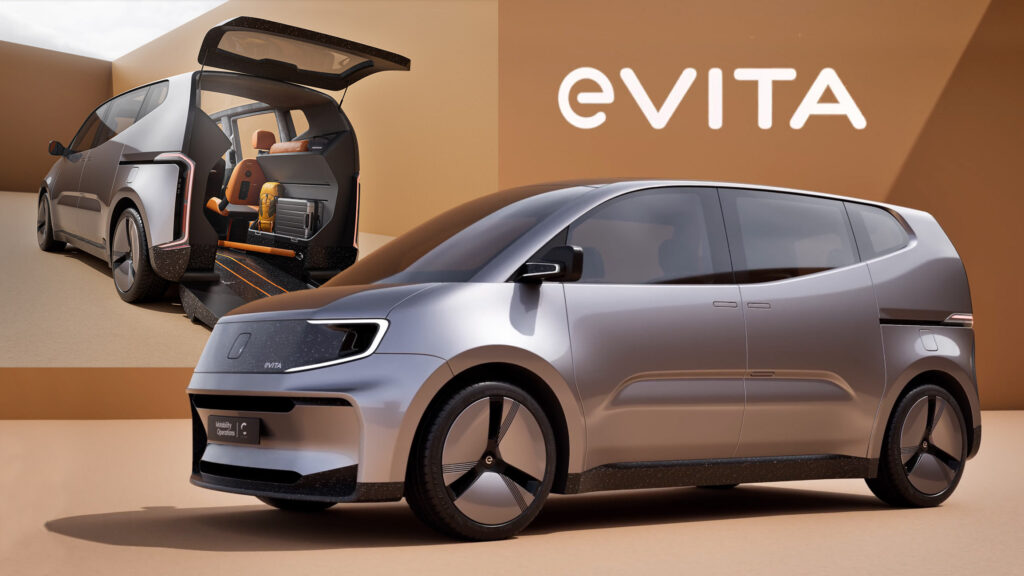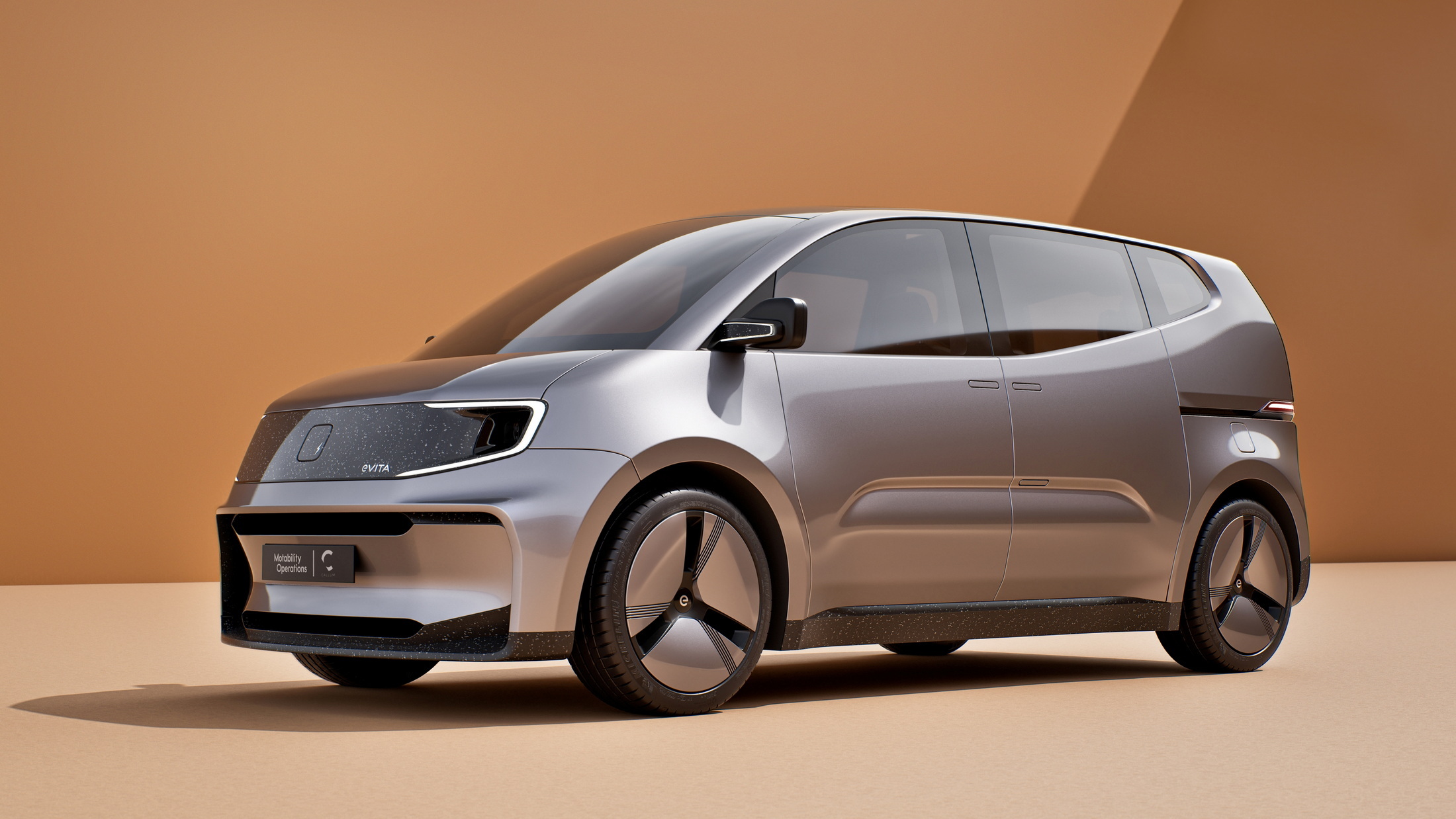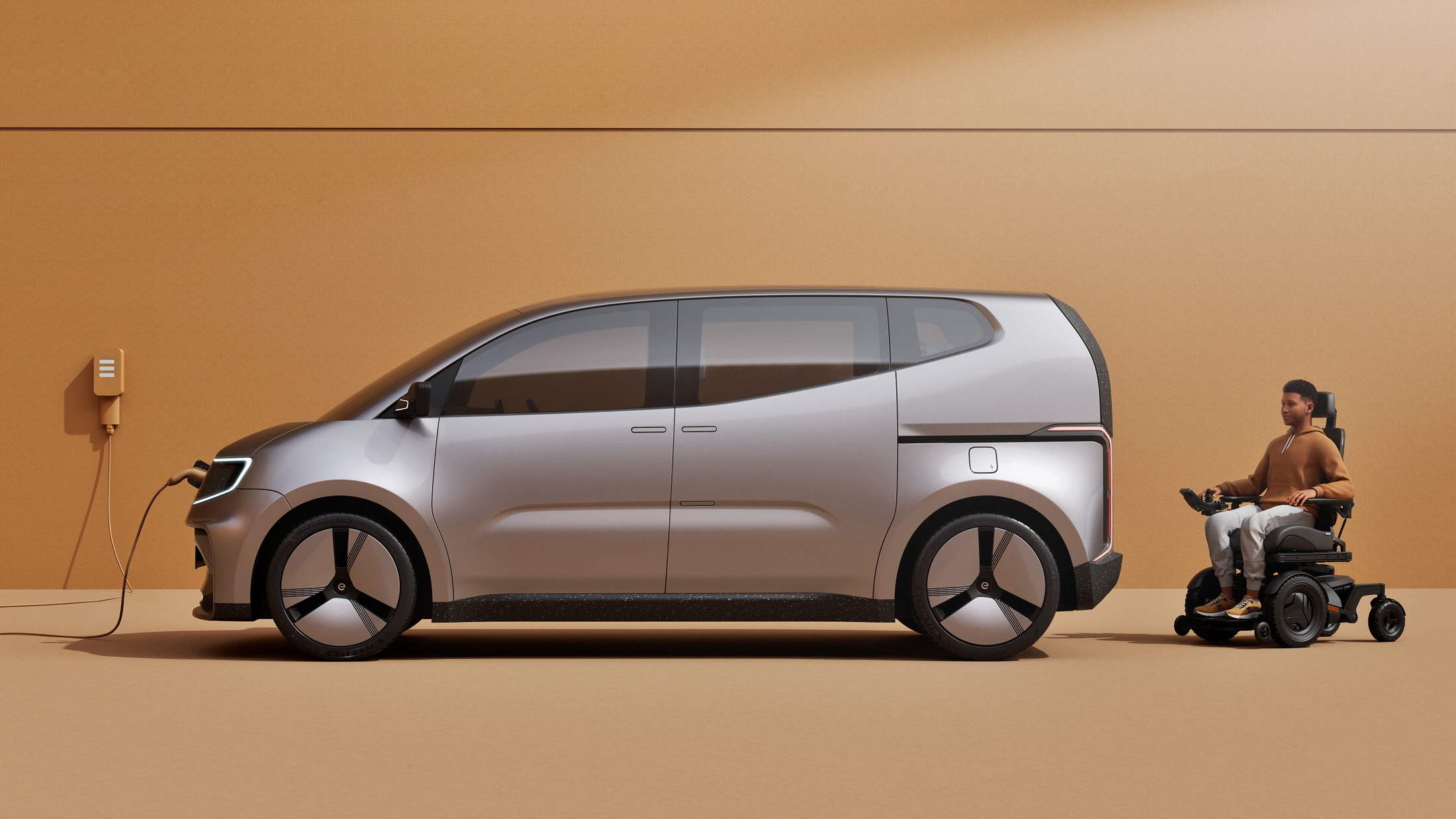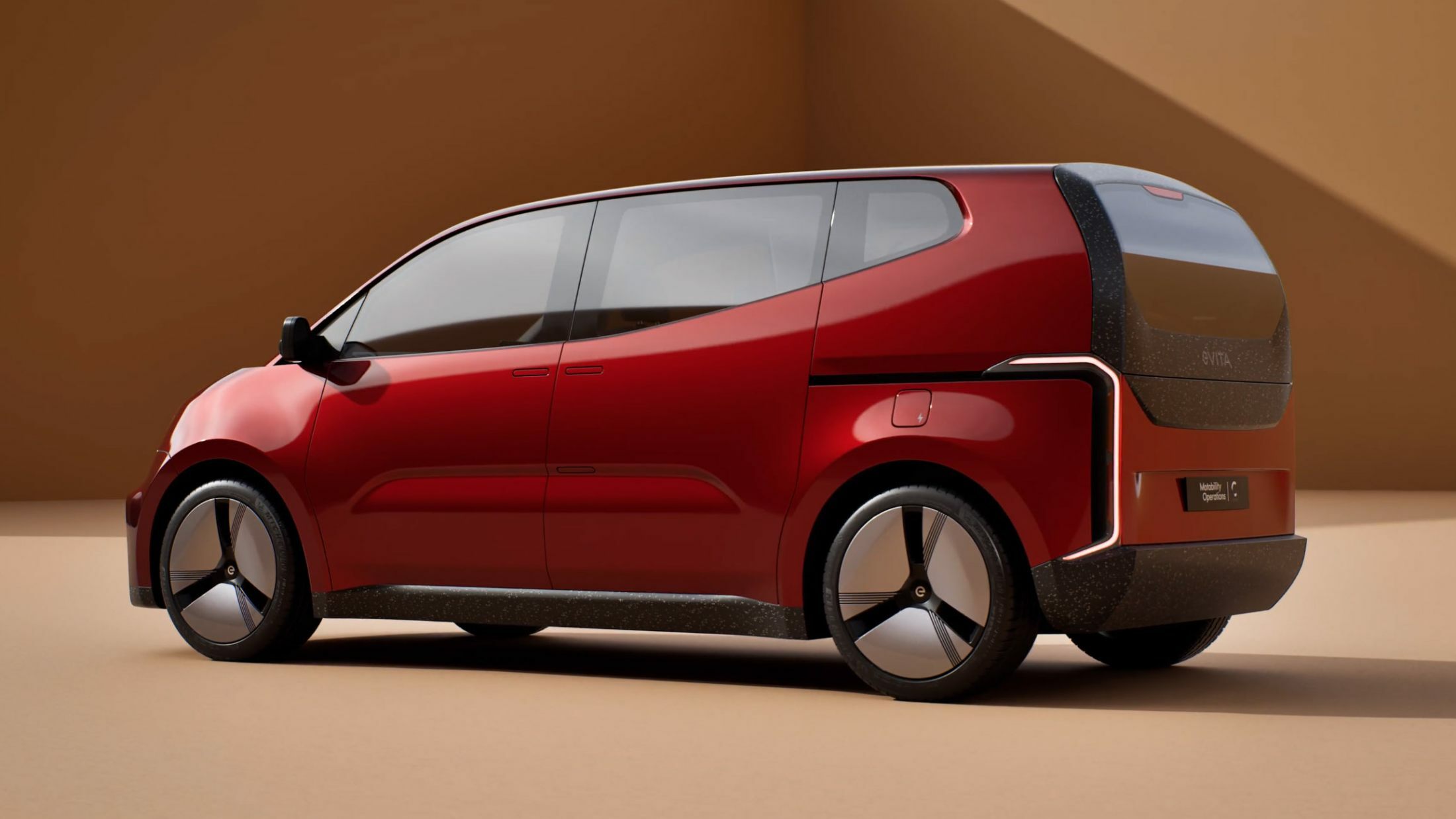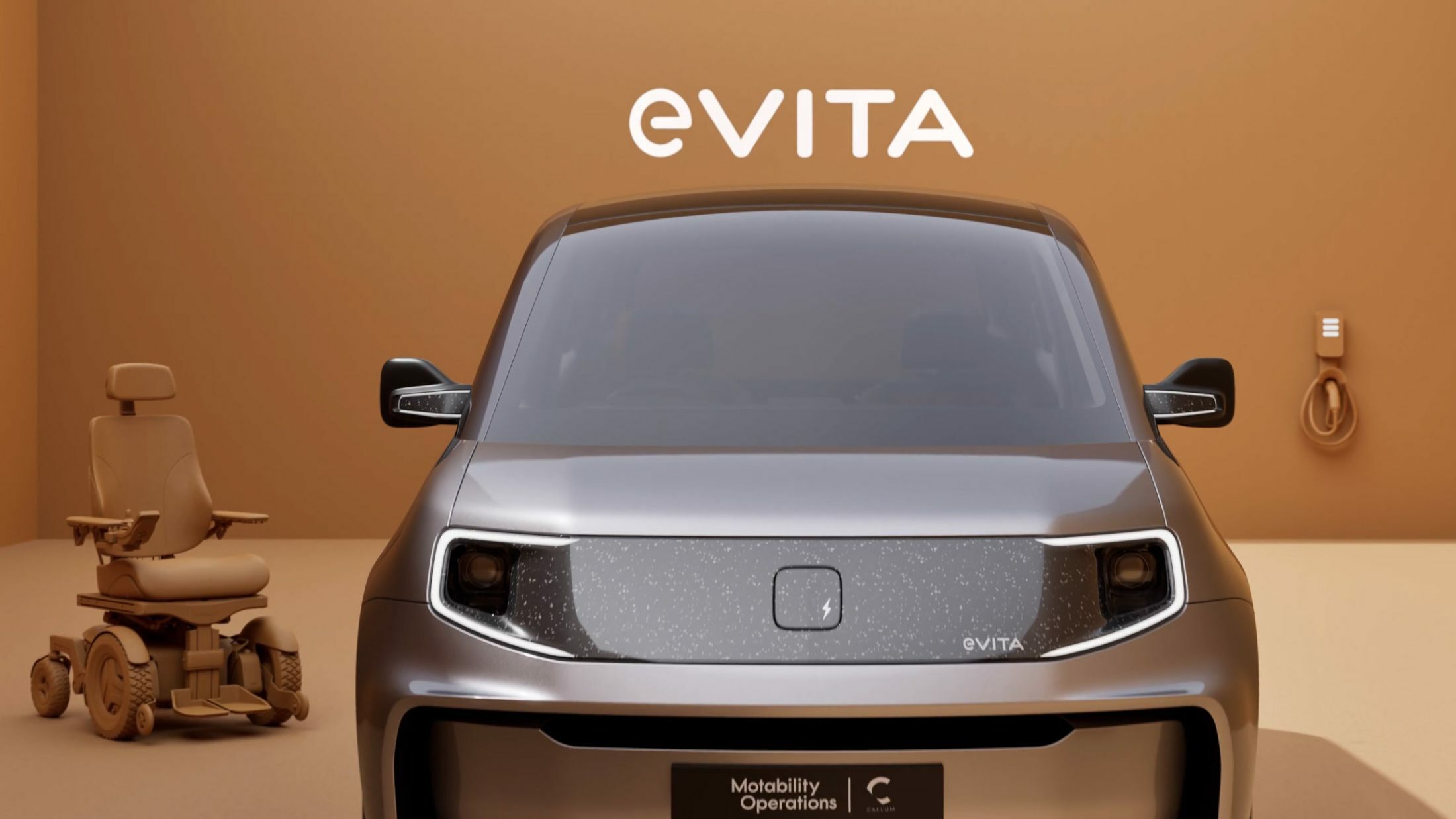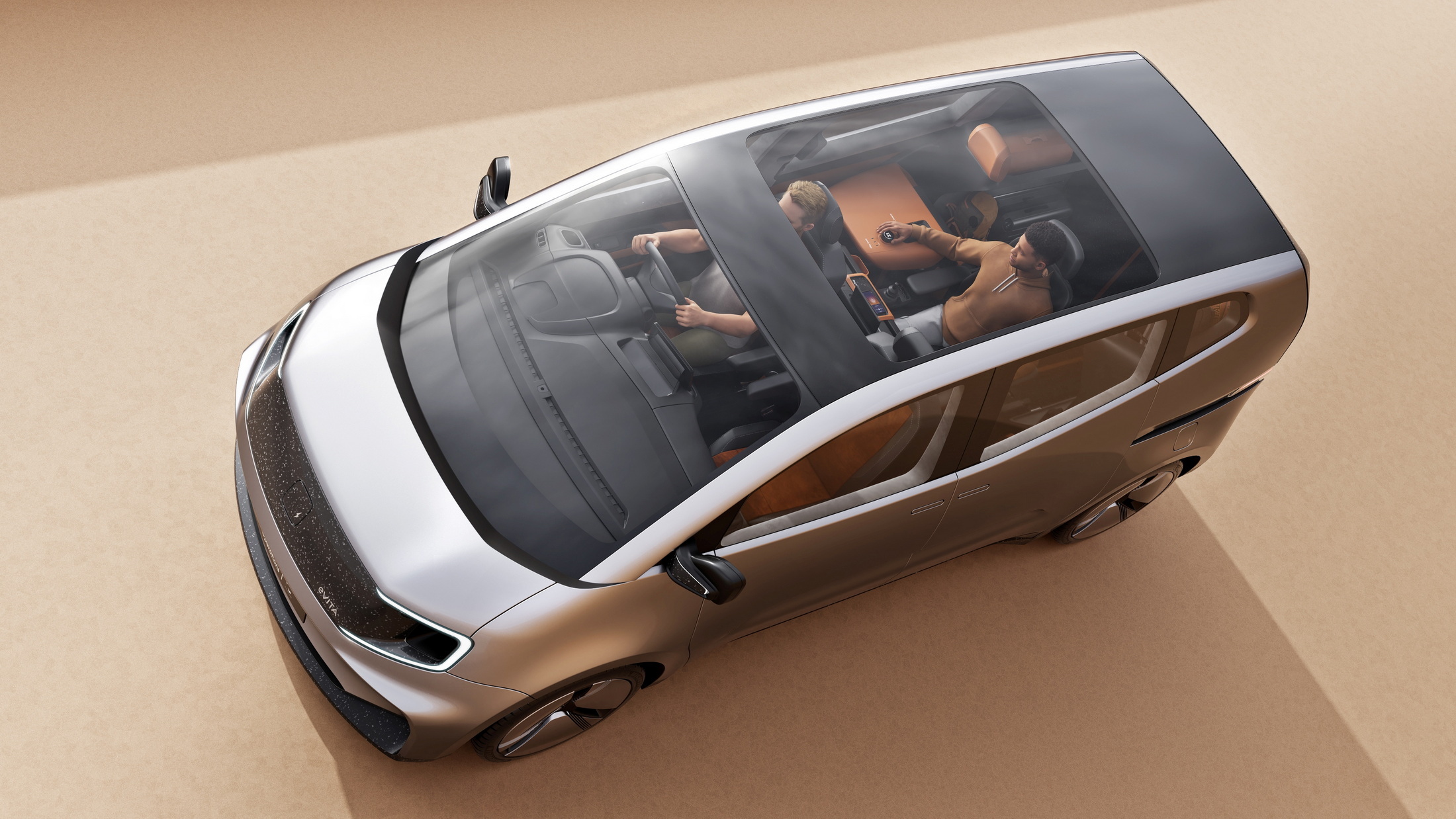UK-based firm Motability Operations and design studio Callum revealed the eVITA concept – a fully electric van designed to support the mobility of wheelchair users.
The eVITA was designed and engineered by Callum with input from Motability Operations’ customer clinics. Envisioned as a next-generation electric wheelchair-accessible vehicle (eWAV) concept, the eVITA addresses the most common issues with EV conversions, including limited interior height due to the floor-mounted batteries, accessibility, and practicality.
More: Citroen “Ami For All” Is A Wheelchair-Friendly Prototype EV For Disabled Drivers
The eVITA has a similar footprint to the Citroen Berlingo, measuring 4,520 mm (178 inches) long, 1,908 mm (75.1 inches) wide, and 1,800 mm (70.9 inches) tall with a wheelbase of 2,980 mm (117.3 inches). The exterior design is quite modern, adopting a short hood, a large greenhouse, and very short overhangs.
The highlight of the concept is the split tailgate with an integrated low-angle ramp, allowing easy access from the back. This is joined by four more doors on the sides – two conventional and two sliding. When the vehicle is parked, LED puddle lights highlight the area where the ramp will be deployed at the rear, so that other drivers are aware.
Reengineered Battery For A Flat Floor
The repackaged battery is positioned low behind the first row of seats, allowing the floor to be completely flat so that the wheelchair can move freely. Furthermore, the hatchback-style ride height of 160 mm (6.3 inches) and the lower seating position mean that the wheelchair user sits at a similar height to other occupants.
The 50 kWh battery offers an estimated range of around 200 miles (322 km) and can replenish energy from dual charging ports, one at the rear and another at the front. Another engineering focus was the highly damped rear suspension, offering a supple ride and predictable handling with a minimum body roll thanks to the low center of gravity. Last but not least, the engineering team used lightweight materials where possible, so the EV is compatible with high payload requirements for onboard equipment.
Versatile Interior
The wheelchair user has also access to an infotainment display, heating and A/C controls, plus a customizable “utility bar”. The latter features charging ports, hooks for hanging clothes or bags, cupholders, and storage cubbies. Furthermore, the single rear passenger seat can flip down, transforming into a tray with additional options for charging electronic devices. Finally, the interior side panels have plenty of room for storage, making up for the lack of a boot.
The dashboard of the eVITA appears to be shared with the Citroen Berlingo, Opel Combo Life, Peugeot Rifter, and Toyota ProAce City Verso siblings, suggesting that the concept rides on a modified version of the EMP2 architecture. This is all but confirmed by the comments of Andrew Miller, CEO of Motability Operations who said: “Collaboration is key to making the EV transition a success for wheelchair users; we need our partners, manufacturers, and policymakers to believe in better and to work alongside us to take action. eVITA shows what can be done. We are particularly grateful to Stellantis for its enthusiasm and technical support to develop our concept”.
Showing The Way
While the eVITA is not destined for production, it shows the way for major automakers to improve the design of future EVs, making them more accessible to wheelchair users.
Ian Callum, founder and design director at Callum said: “Today, electric vehicles are not offering the functionality and flexibility required by WAV users. OEMs, their designers and engineers must plan ahead and embrace inclusive design principles to ensure that WAV users and disabled people are not forgotten in the transition to EVs. With eVITA, form, and functionality have been developed in parallel, resulting in a well-considered, user-friendly EV that is both practical and stylish.”




